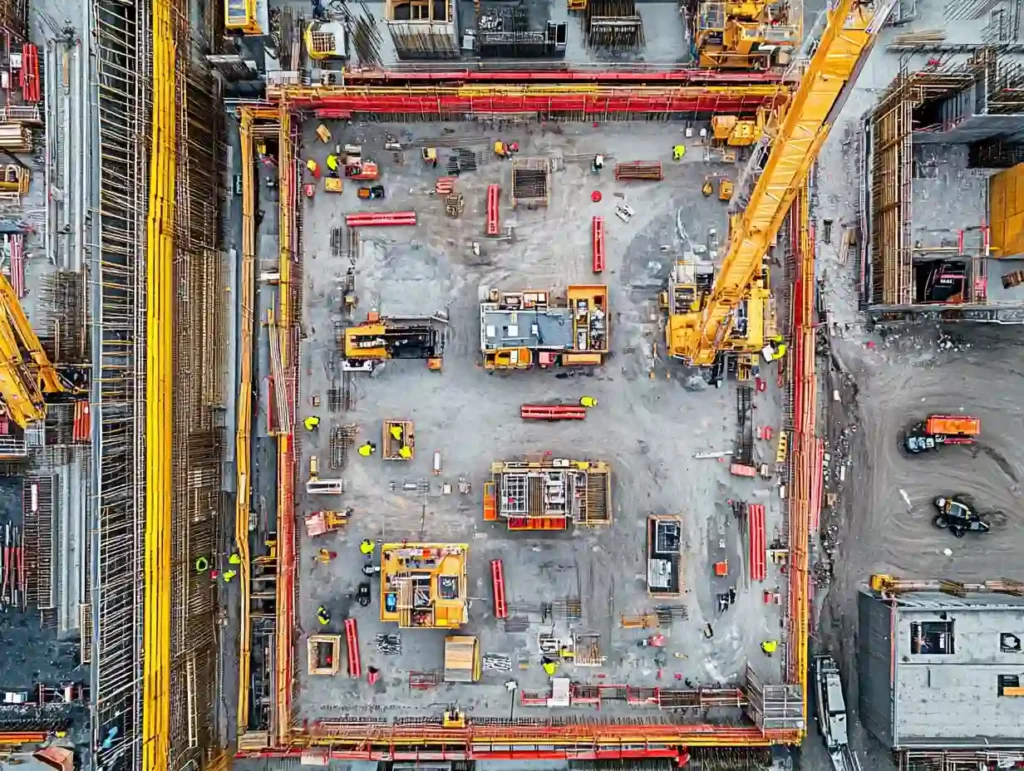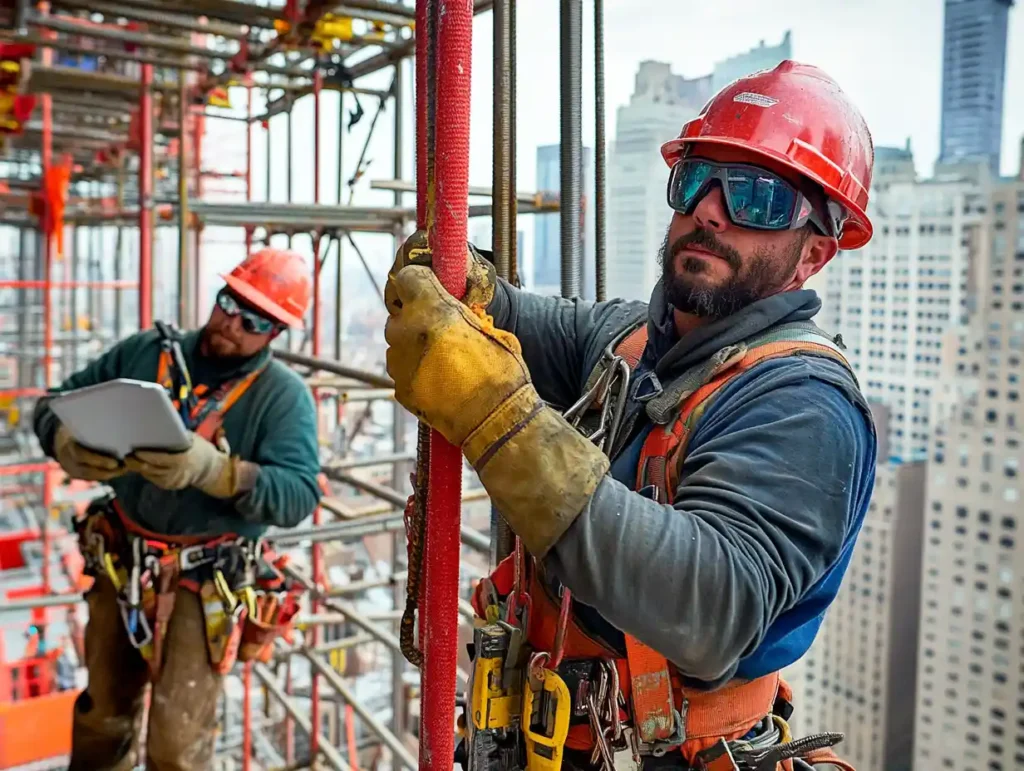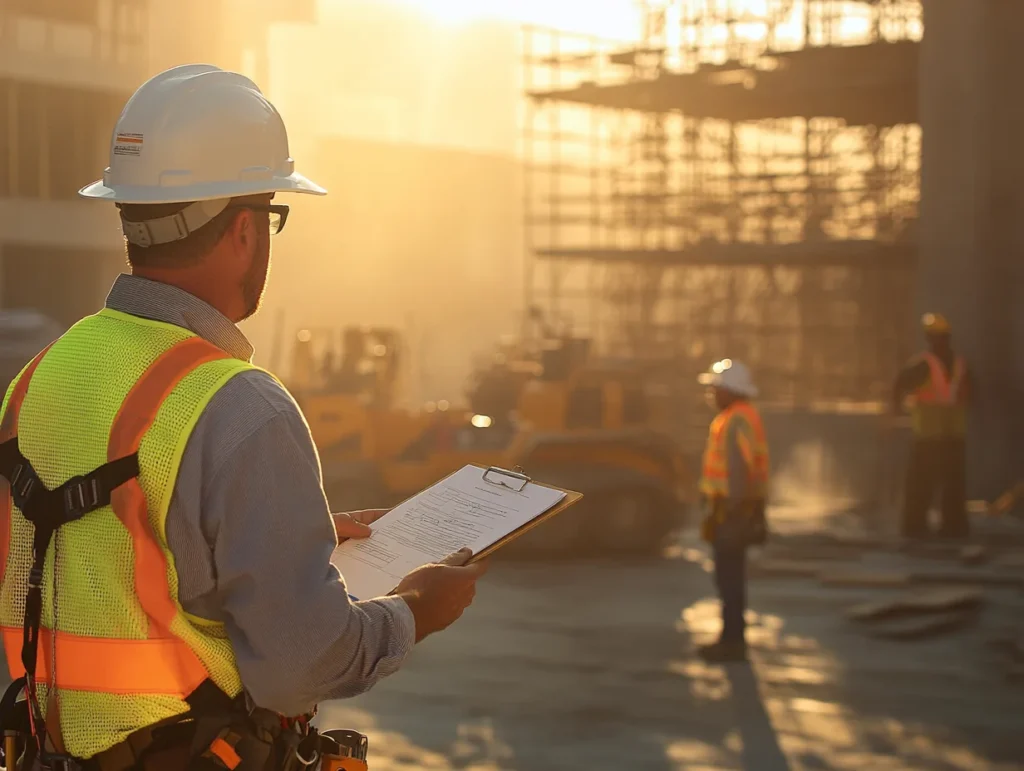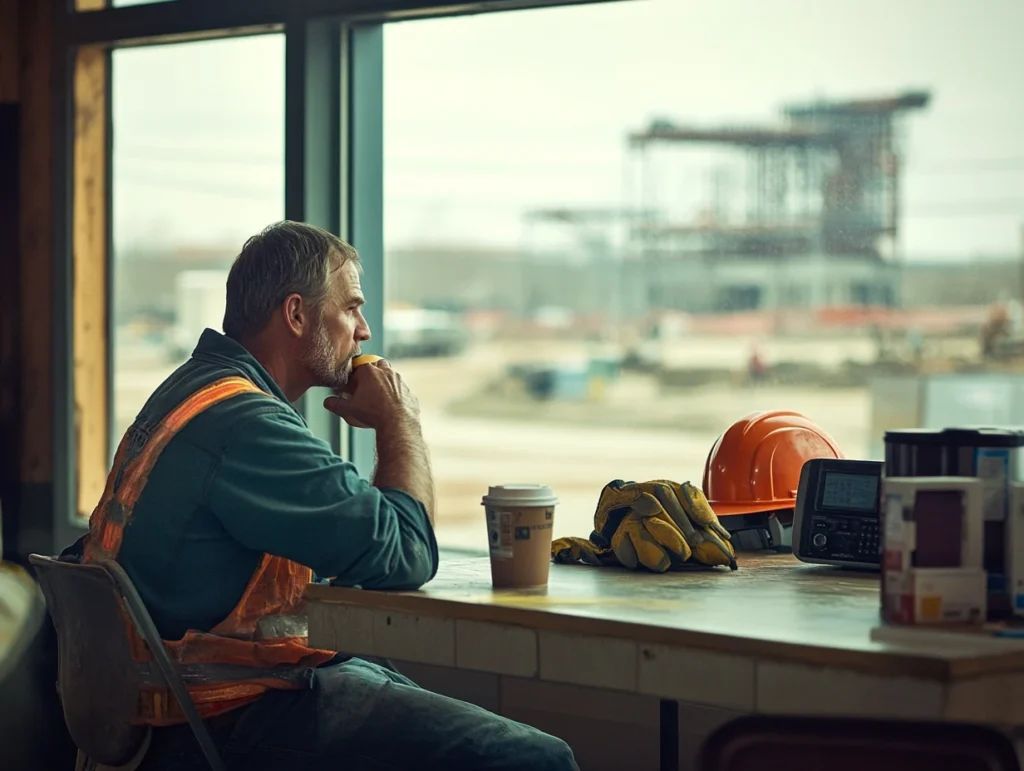Construction Industry Safety Changes in 2025

As we move into 2025, the construction industry is faced with a barrage of new safety rules, regulations, and policies. Construction professionals, from general contractors to scaffolding companies, need to stay on top of these changes to keep our working environments safe and ensure compliance with both state and federal regulations.
In this blog, our experts explore the most important updates for 2025, so we can head into the new year ready for anything.
Table of Contents
OSHA Safety Regulations: More Stringent Protections for Workers
The Occupational Safety and Health Administration (OSHA) is continuously updating its safety standards to address emerging hazards in the workplace, and 2025 is no exception. Several key regulations impacting the construction industry are set to go into effect this year.
Enhanced Fall Protection Requirements

Falls remain the leading cause of death in the construction industry, so it makes sense that OSHA is doubling down on fall protection in 2025. The new regulations require that fall protection systems, including guardrails, safety nets, and personal fall arrest systems, be utilized for a wider range of tasks, including those involving scaffolding and roof work.
Contractors must also now ensure that these systems are regularly inspected and maintained to ensure their effectiveness. The emphasis is on preventing falls before they occur, and this includes better planning and risk assessment for high-risk tasks.
Scaffold Safety Regulations
Scaffolding plays a critical role in construction projects, but it also poses significant safety risks. OSHA’s updated scaffolding regulations for 2025 are designed to reduce the likelihood of accidents and ensure scaffolding is properly erected, inspected, and maintained.
Key changes include:
Ensuring that scaffolds are designed and built to withstand the loads they will bear.
Requiring that scaffolds be inspected by a competent person before every shift.
Use of more durable and lightweight materials to create safer conditions.
Silica Exposure Rules
Construction workers involved in tasks like cutting, grinding, or drilling concrete may be at risk for inhaling harmful silica dust, which can cause serious respiratory diseases. In 2025, the new regulations surrounding silica exposure in the construction industry will go into full effect, reducing the acceptable levels of silica dust from 250 micrograms per cubic meter of air to 50 micrograms per cubic meter of air.
To protect workers, construction companies will also be required to implement exposure control plans that may include new ventilation systems, provide workers with appropriate respirators, regularly monitor air quality on job sites, and provide medical exams to those who work in areas with higher exposure. These measures are part of OSHA’s ongoing effort to reduce worker exposure to harmful airborne particles.
Increased Fines
In 2025, the Occupational Safety and Health Administration (OSHA) has increased its penalties for safety violations across various industries, including construction. As part of these changes, OSHA has raised the maximum penalties for serious, willful, and repeated violations, and construction companies must take immediate notice.
The new penalty structure includes:
Serious Violations
The maximum penalty for serious violations has been raised to $16,550 per violation, up from $16,131 in 2024. Serious violations are those where there is a substantial probability that death or serious injury could result from the violation.
Willful Violations
Willful violations, which involve intentional disregard for safety regulations or a blatant indifference to worker safety, now carry a maximum fine of $165,514, up from $161,323. This is one of the highest penalty increases and underscores the importance of adhering to safety guidelines and standards.
Repeated Violations
The maximum penalty for repeated violations, where an employer has violated the same or similar safety standard previously, has also increased to $165,514 per violation, matching the new fine for willful violations.
These increases are designed to provide a stronger financial deterrent to employers who fail to maintain safety standards, particularly in high-risk industries like construction, where the potential for serious injuries is significant.
The Updated Beneficial Ownership Rule: A Compliance Requirement
While not directly related to safety, the Beneficial Ownership rule under the Corporate Transparency Act (CTA) is one of the most significant regulatory updates for the construction industry in 2025. The rule, designed to enhance transparency and combat money laundering and tax evasion, requires companies to disclose information about their beneficial owners to the U.S. Department of the Treasury’s Financial Crimes Enforcement Network (FinCEN).
Who Is Affected?

Construction companies, especially those involved in federal contracts or partnerships, need to be aware of these compliance requirements. Any business with more than 25% ownership must disclose the names and addresses of its beneficial owners.
These changes mean that construction companies must carefully track ownership changes and provide detailed information on owners’ identities, which can impact contract eligibility and other business dealings.
Why Is This Important for Safety?
Although the Beneficial Ownership rule focuses on financial transparency rather than workplace safety, it has a ripple effect on safety culture. Companies that comply with these rules are more likely to have strong internal controls, which can lead to better overall management and more robust safety practices.
Compliance with these rules also helps avoid legal complications that could distract from essential safety initiatives.
New Reporting Guidelines
OSHA is also introducing significant updates to its reporting requirements in 2025, which will directly impact construction companies across the nation. These changes aim to streamline reporting processes, improve workplace safety transparency, and enhance OSHA’s ability to identify hazards and track safety trends across industries.
Electronic Reporting Requirements
OSHA is also moving towards a more digitized and streamlined process for reporting work-related incidents, with most businesses being required to submit their injury and illness reports electronically through OSHA’s Injury Tracking Application (ITA). This includes both employers with 250 or more employees, as well as smaller businesses (with fewer than 250 employees) that are considered high-risk industries, including construction.
Employers must submit detailed reports, including the nature of the injury, the cause, and the worksite’s safety history. OSHA will use this data to track patterns, analyze workplace hazards, and potentially identify common risk factors across the construction industry.
Increased Focus on Injury and Illness Records
Construction companies will be required to maintain more comprehensive records of all injuries, illnesses, and incidents, not just the severe ones. OSHA has increased the level of detail that must be included in injury and illness reports, meaning employers will need to track not only the injury itself but also the exact circumstances that led to it.
Increased Focus on Mental Health and Worker Well-being

Mental health in the construction industry is increasingly being recognized as a critical aspect of worker safety. In 2025, several safety regulations are being introduced that focus on supporting mental health in construction workers and creating a more inclusive and supportive work environment.
Mental Health Training for Supervisors
Construction companies will be encouraged to provide mental health awareness and stress management training for supervisors and project managers. These programs are designed to equip leaders with the skills to recognize mental health issues and provide support to workers who may be struggling, problems that are all-too-common in our industry.
Employee Assistance Programs (EAPs)
Construction companies should also shift focus to Employee Assistance Programs (EAPs) to help workers address mental health issues, substance abuse problems, and personal challenges. These programs are becoming an integral part of the overall health and safety strategy, as promoting mental well-being is essential for maintaining a safe work environment.
Stay Ahead of Safety Regulations in 2025 with Associated Scaffolding
As we look ahead to 2025, the construction industry will continue to face evolving safety regulations, in order to create a safer work environment for all. By embracing these new rules and regulations, construction companies can not only safeguard their workers but also boost their operational efficiency and reputation in an increasingly competitive industry.
At Associated Scaffolding, safety is our first priority. Contact us today to learn more about our safety training and one-stop-safety shop, as well as for more info on our equipment rentals!


